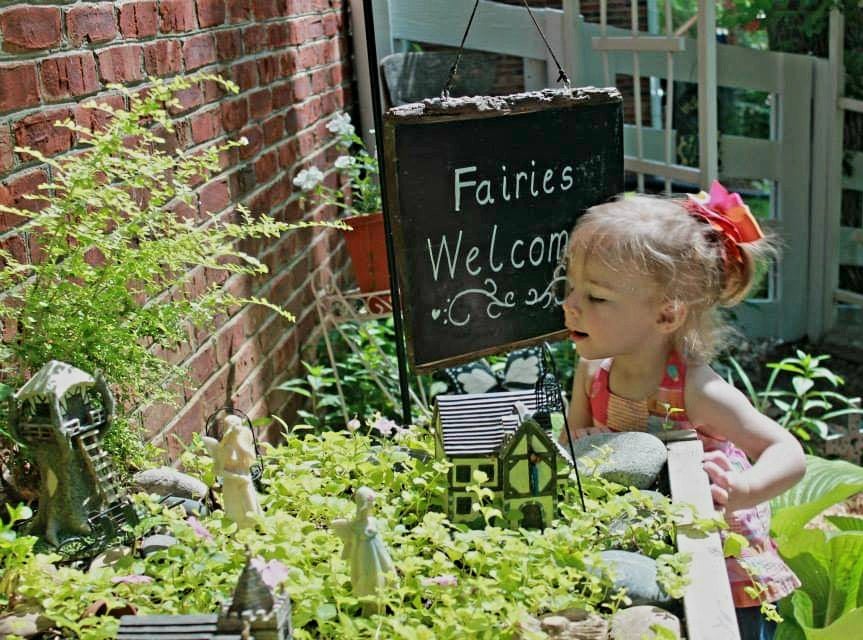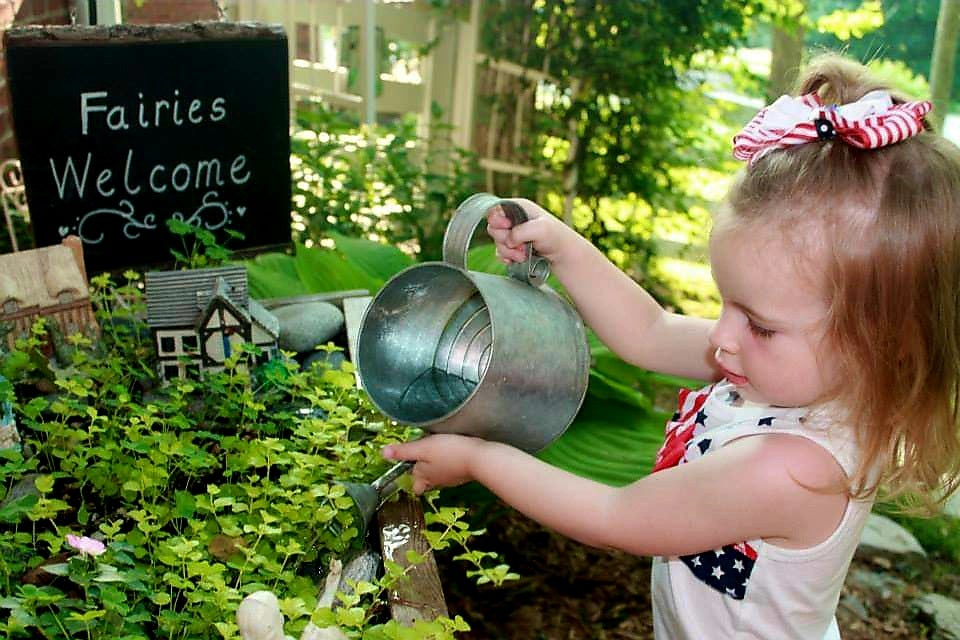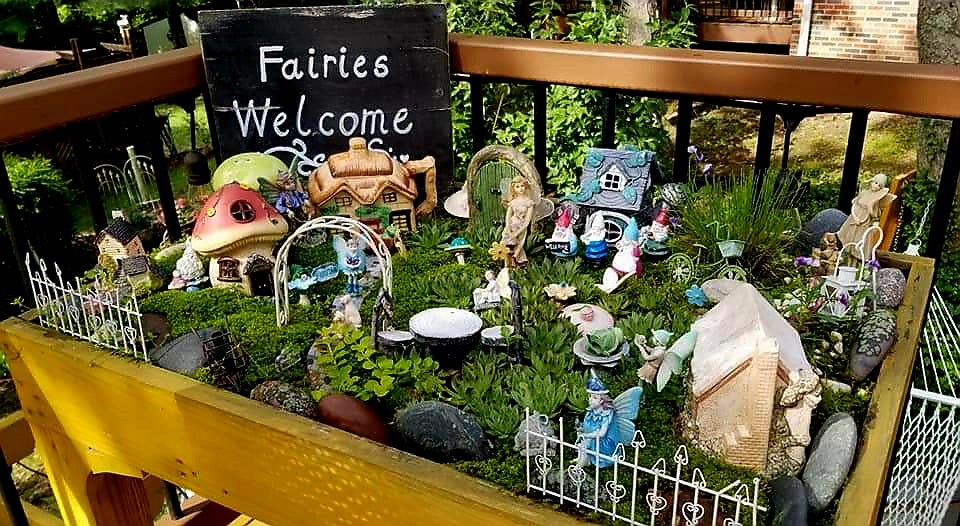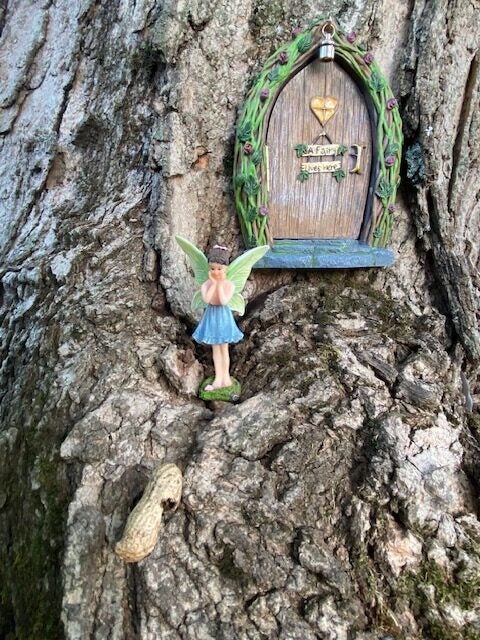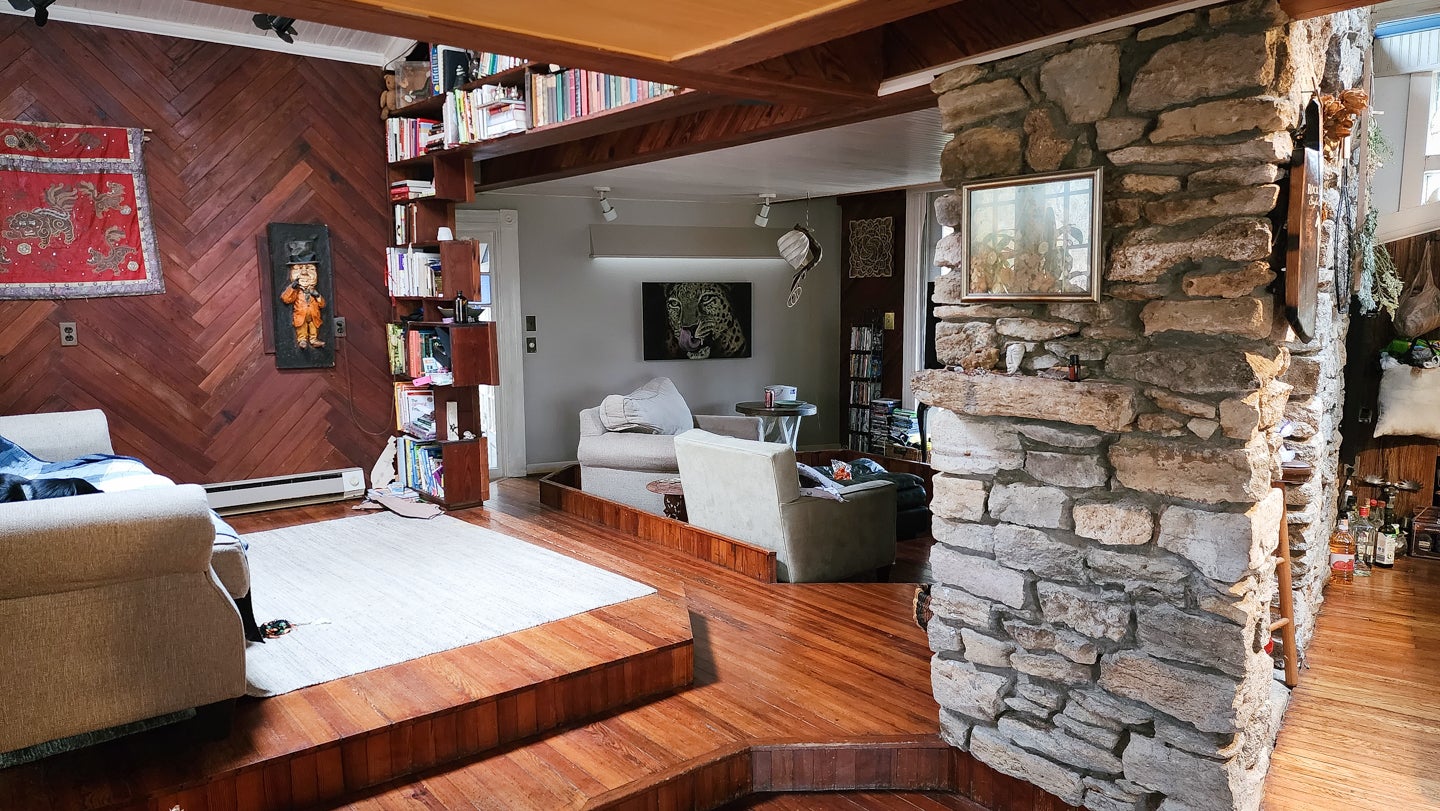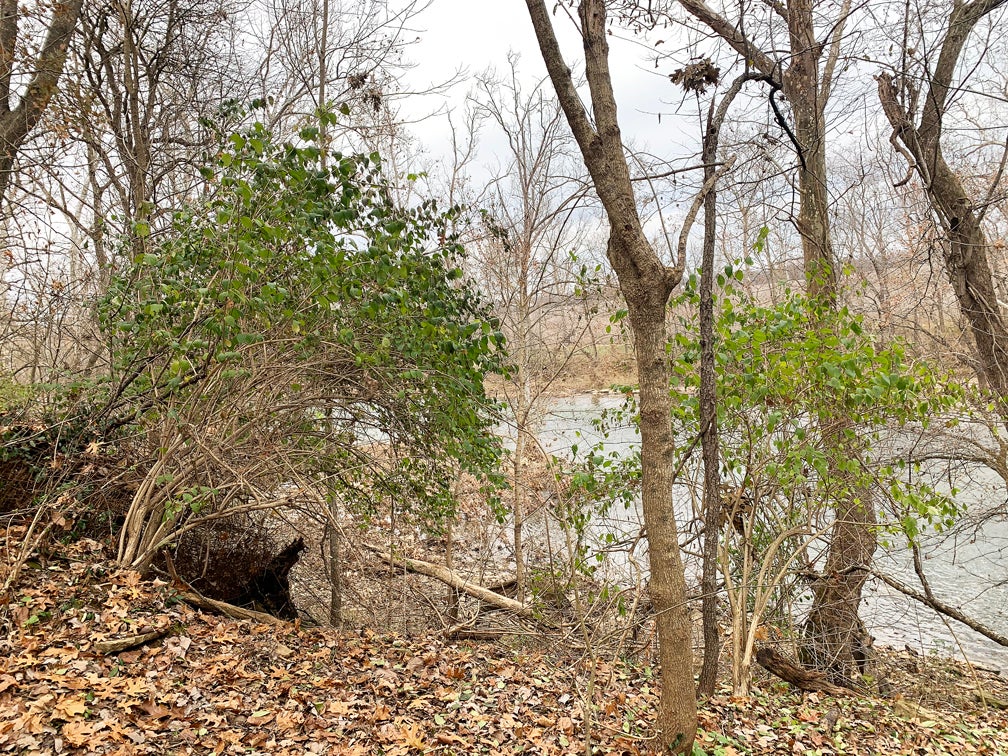By Barbara Hadley Smith, The Garden Club of Frankfort
Do you sometimes want to escape to an imaginary world of your own making? Two members of The Garden Club of Frankfort have accomplished that with the delightful fairy gardens they have created.
Stephanie Harding-Kalla said that she started looking at fairy gardens many years ago on Pinterest and always wanted to create her own little enchanted area.
Paula Wylie was a fan of Peter Pan and Tinker Bell as a child and loved books about fairies. As a kindergarten teacher, she read the stories to her classes, and later to her grandchildren. Over the years she created four raised beds containing fairy communities and several scenes wrapped around trees.

Both Stephanie and Paula encourage interactive play with their gardens.
“I have young granddaughters who love the area around the tree and they always move things around,” Stephanie said. “My neighbor kids love to come over and check on the fairies and see what they’ve been up to.”
Likewise, Paula’s grandchildren move the figures around creating different adventures. “It is great for the children, because they are outside, learning about plants, and using their imagination,” Paula said.
Both women have found the figures for their gardens in thrift stores, discount stores, catalogues and online. Some items they received as gifts. They get their miniature plants from local garden centers and use small perennial flowers to add color.
“I’ve found that using ivy, ferns and mosses works the best for me — and is affordable,” Stephanie said. “Since the gardens are kept outside, they overwinter well. I just go with cheap and easy to grow plants.”
Paula suggests there are many containers you can use to establish a fairy garden.
“Look around your garage or basement to see what you have already,” she said. “Galvanized metal tubs are good. Start small!”
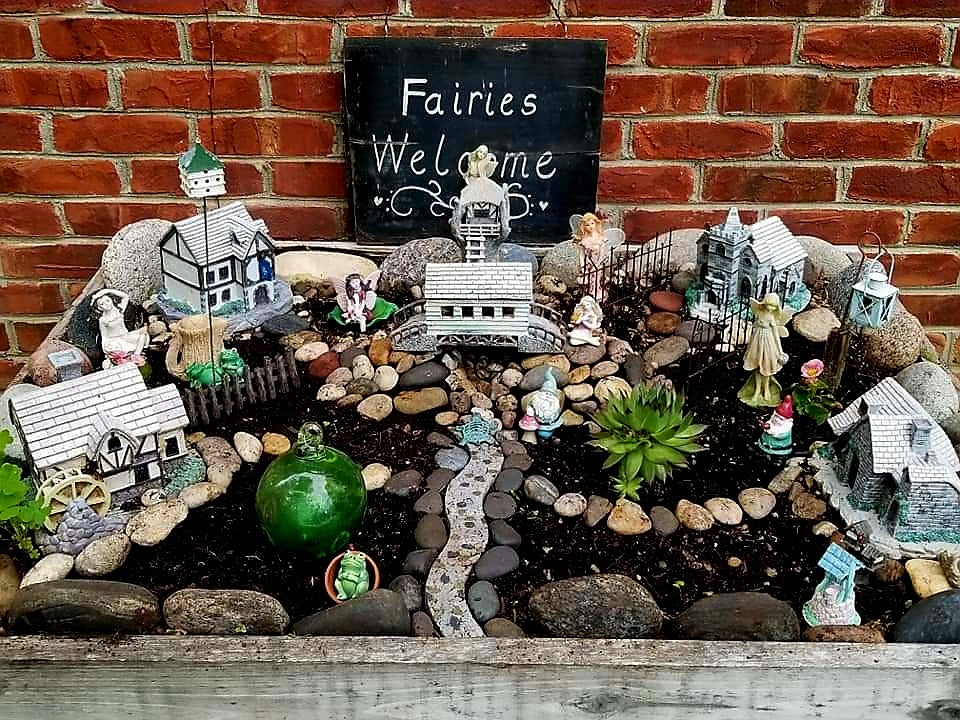
To set up her scenes, Paula spreads out the dirt, outlines the border with river rock, plants the greenery and flowers, and inserts the accessories and the fairies.
Both women take their resin figures inside during the winter so they will last longer. Each spring the first task is to weed their gardens before reconstructing them.
“My fairy collection is growing, and I am looking to expand my gardens,” Stephanie said. “I’ve been wanting to make a more organic fairy garden by using sticks, bark, acorns, moss and pebbles for the doors and pathways. I just happen to have a magical tree in my front yard that I know fairies would love to live in!“
The internet is a great source of information and supplies for anyone wanting to create a fairy garden. One source suggested, “Don’t use iron or nickel in the fairy garden, as they will repel your fairies. Fairies appreciate it when you recycle, compost and garden organically. Perfect playmates for fairies are fireflies, ladybugs and butterflies.”
NOTE: The birthdate for Lilian Lindsey was incorrect in the January edition of FRANK. Magazine article. The correct date is 1878.

